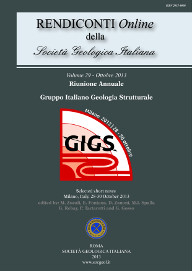
Melting and mechanical stability of sub-ice lake: a possible scenario for Aram Chaos evolution (Mars)
Manuel Roda (a), Rob Govers (a) & Tanja E. Zegers (a)
(a) Universiteit Utrecht, Fac. of Geosciences Budapestlaan 4, 3584 CD Utrecht, The Netherlands. E-mail: m.roda@uu.nl
Volume: 29/2013
Pages: 146-149
Abstract
Chaotic terrains and relative outflow channels represent the largest systems carved by liquid water on Mars and intrigue geoscientists for their peculiar morphology with no terrestrial equivalent. The subsurface mechanism by which chaotic terrains form and produce catastrophic quantities of water is still poorly understood. For this reason, a 2D timedependent thermo-mechanical model, including ice-water phase changes and sedimentation processes, is developed to study the effects of planetary heat loss and sedimentation rate on the time scale for melting and on the mechanical and hydrological stability of the sub-ice lake scenario. The results show that a planetary heat loss greater than 25 mW/m2 and sedimentation rates between 0.1 and 0.001 mm/yr produce stable melting process, resulting in a water thickness greater than 0.5 km on a time scale less than 1 Gyr. These ranges for heat loss and sedimentation rates fit with estimates obtained by geological and morphological observations of the Aram Chaos.
Keywords
Get Full Text